|
|
Battery powered Magic Lanterns. Part 2. |
|
A.K. Mini cinematograph/magic lantern. A small stamped metal, black crinkle finished projector suitable for both glass slides and 35mm films, made by the manufacturer Andres Krüss, Hamburg, Germany. The film is transported by an intermittent mechanism. The illuminant is a miniature bulb which according to the instructions uses a 4 volt battery. A holder for this battery is on the rear of the base. A wire holder for the films is missing. Includes is a 2 sided instruction leaflet in four languages. The base measures about 6 x 3 3/4 inches (15.25 x 9.5 cm). It stands 4 3/4 inches (12 cm) high. |
||
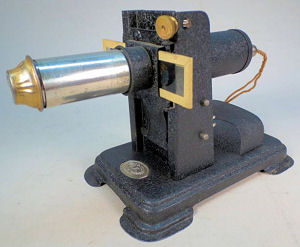 |
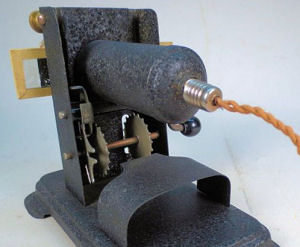 |
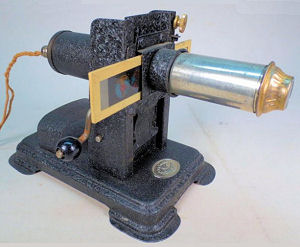 |
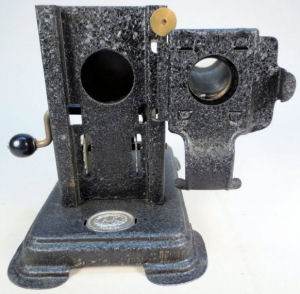 |
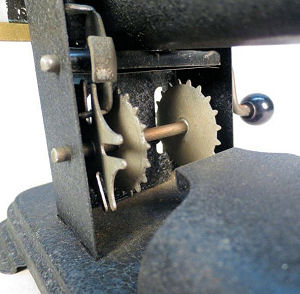 |
 |
 The same battery operated cinematograph/magic lantern marked with a small shield 'MNW Made in Germany'. |
|
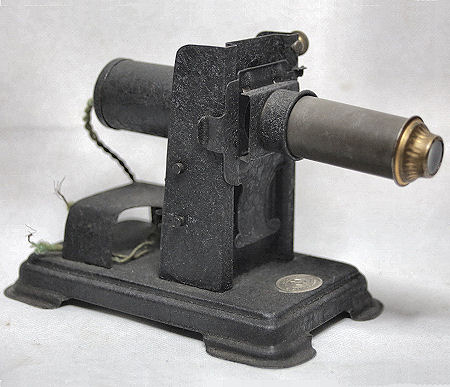 |
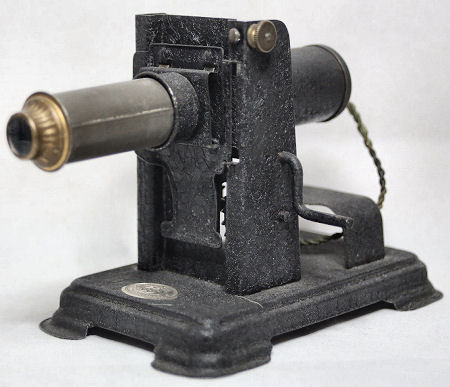 |
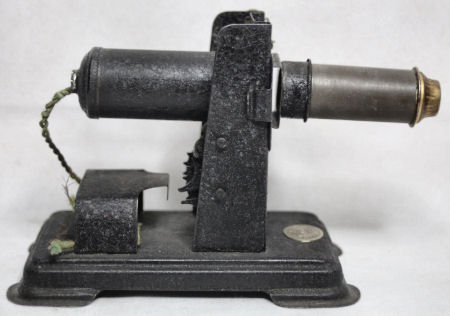 |
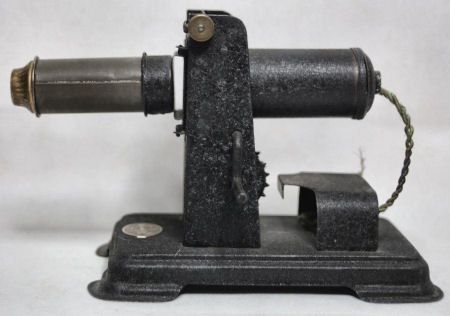 |
|
A.K. toverlantaarn. |
|
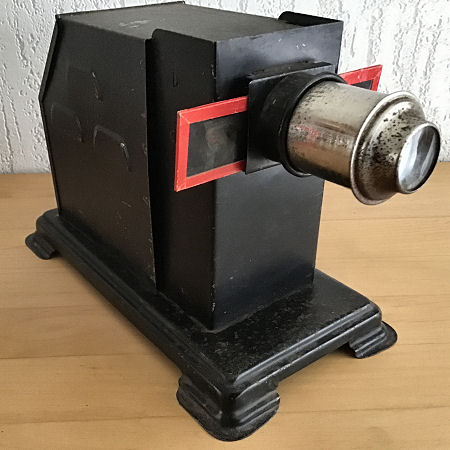 |
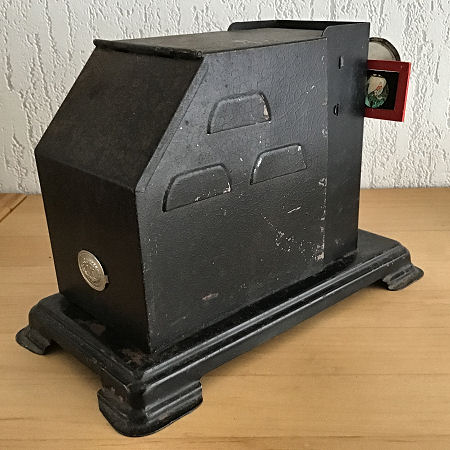 |
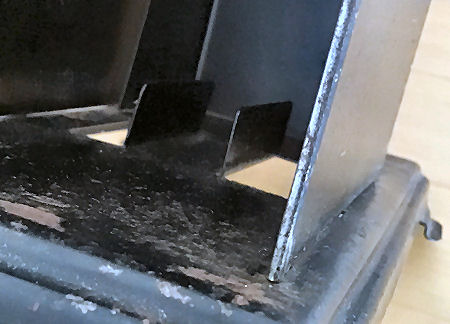 |
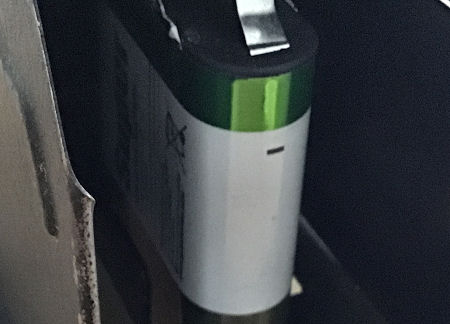 |
 |
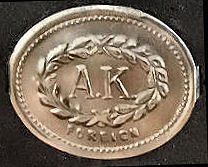 A small magic lantern with battery lighting made by Andres Krüss from Hamburg. The lantern has a striking bent hinged back wall. There are two supports in the lamp housing between which a flat 4.5 battery can be clamped. The dimensions of the lantern are: base incl. legs: 21.5 x 11.5 cm; height 14 cm; length incl. lens 24 cm. |
Small cinematograph using a separate battery holder. This cinematograph is made of Russian iron and has been painted with red-lead rather sloppy. |
|
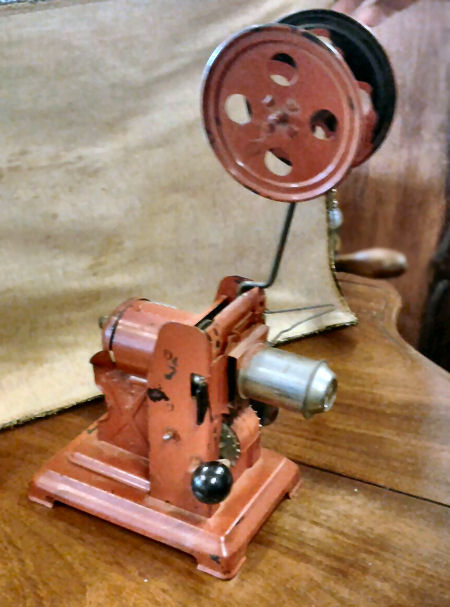 |
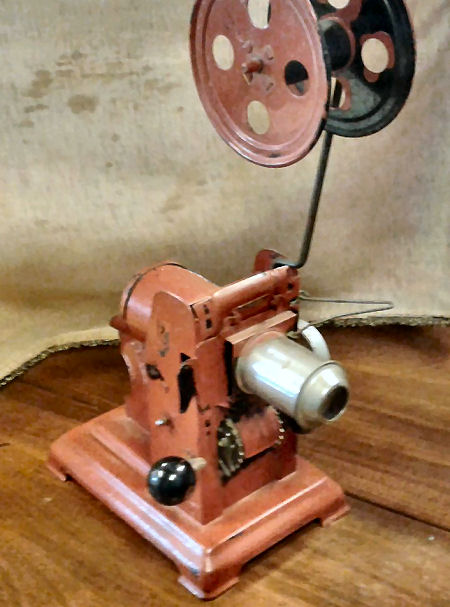 |
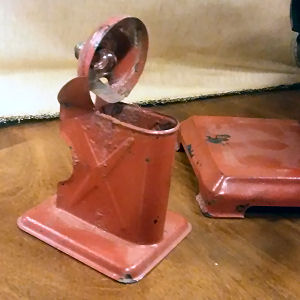 |
 |
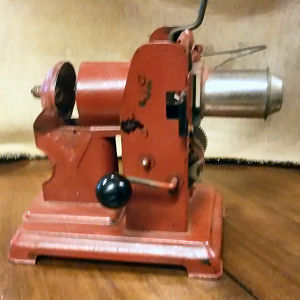 |
|
Pordell Flashlight Projector. |
|||
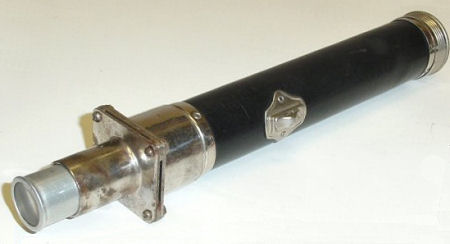 |
 |
||
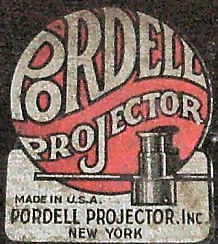 |
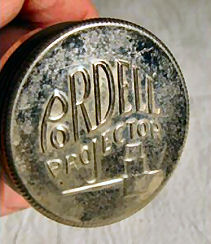 |
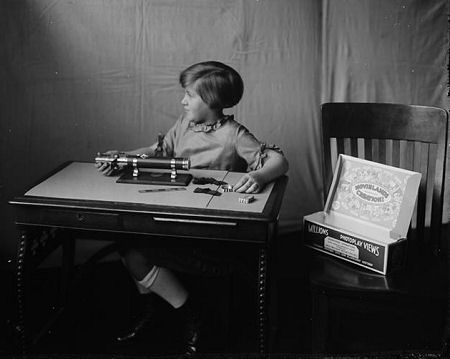 Girl with toy Pordell Projector. Black and white photo c. 1925. |
|
|
A lens/filmstrip unit mounted on a flashlight body clamped to a wooden base.
C. 1927. The slot for film or thin magic lantern slides is only 28 mm. The body takes three D-cell batteries. Measures with lens tube in c. 11 3/4" (30 cm). Wood base is c. 9" x 4 1/8" (23 x 10.5 cm).
|
|||
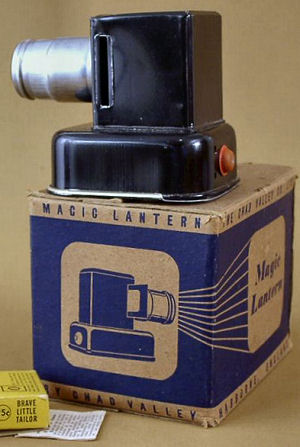 |
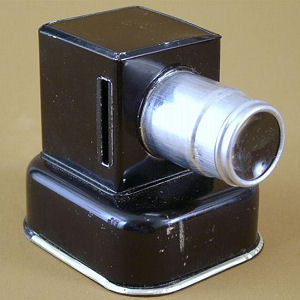 |
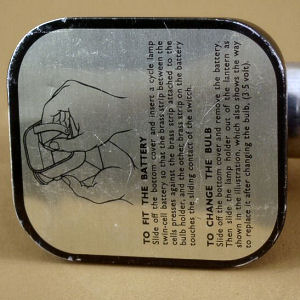 |
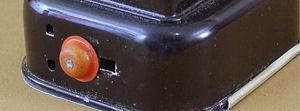 |
Tin toy magic lantern in a cardboard box made by The Chad Valley Co. Ltd in Harborne, England. | |
|
Pocketbio Flashlight magic lantern made in Germany by Pertrix, the well-known manufacturer of batteries. |
||
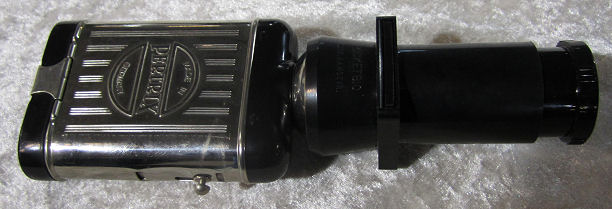 |
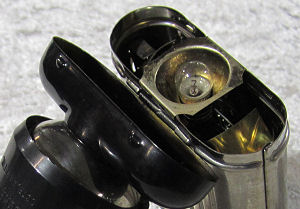 |
|
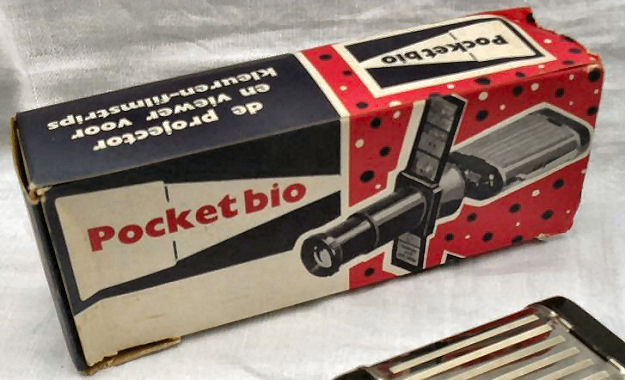 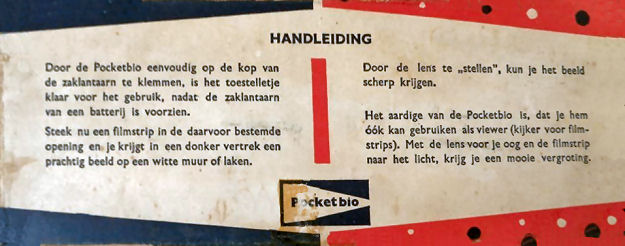 The manual printed on the box. 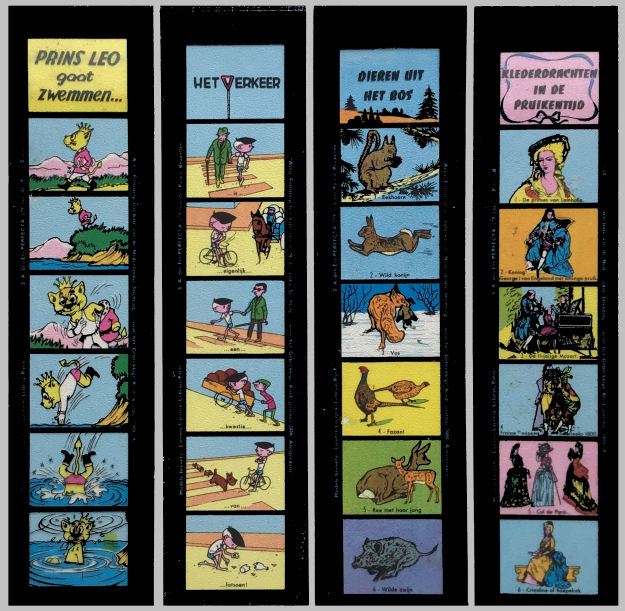 |
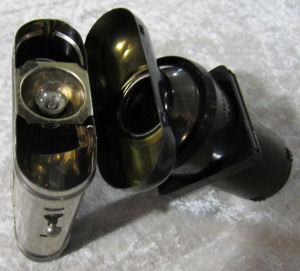  Below is a slightly different version. 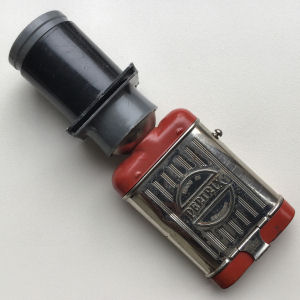 The body is made of chromium-plated tin, the lens tube and filmstrip holder is made of black plastic. The small bulb needs a voltage of 4.5 V from a flat battery. The dimensions of the filmstrips for this lantern are 14.5 x 3.5 cm. Each strip contains 7 images. In small letters in the black border is stated: 'Actie Filmstrip ten bate van de Nederlandse Stichting voor het Gebrekkige Kind, Postbus 2000, Amsterdam' (Action Filmstrip for the benefit of the Dutch Foundation for the Disabled Child, Postbus 2000, Amsterdam). |
|
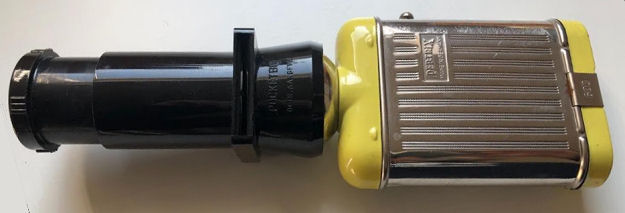 |
A pocket bio with a different flashlight section, yellow and with a different trademark. | |
 |
This Multiscope episcope uses a 4.5 Volt pocket battery and, according to the instruction leaflet..... when a cigarette card is moved into the grooved carrier at the back and switched on, a clear picture will be projected. It is stamped at the front 'Multiscope, made in England, patent applied'. It measures 11 x 8 x 8 cm. Complete with its original box and instruction leaflet. (Also read Episcopes and Epidiascopes.) |
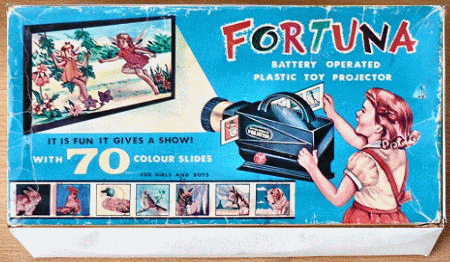 Fortuna, a relatively modern plastic battery operated toy projector. Made in Hong Kong. Dimensions of box 27.5 x 14.5 x 4.5 cm; the projector measures 18 x 11 x 4.5 cm; the film strips are 15.7 x 4.3 cm, each with 7 pictures. |
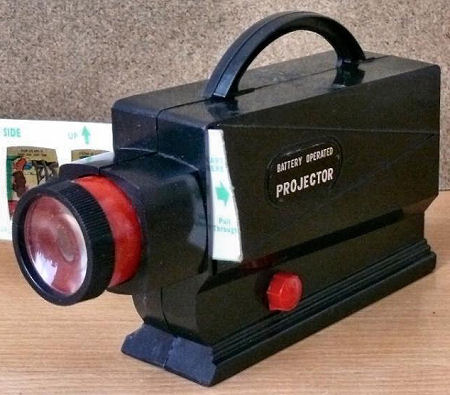 |
 Unfortunately there is no photo of this nice magic lantern 'mit Schwachstrom-Beleuchtung', but I found it in the Ernst Plank Catalog of 1925. This Diogenes can easily be attached to every flashlight battery. |
|
|
Walt Disney Filmstrip Lantern.
|
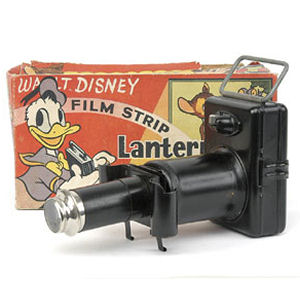 |
 |
|
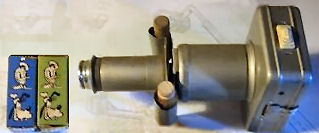 From at least
1952 and for several years during the 1950s, Johnsons of Hendon sold a 4.5 volt
battery powered toy projector that showed stationary film strip images based
upon Walt Disney characters. From at least
1952 and for several years during the 1950s, Johnsons of Hendon sold a 4.5 volt
battery powered toy projector that showed stationary film strip images based
upon Walt Disney characters.The advertisement shows the 3rd version of this projector. Earlier versions had the switch located on the front plate of the projector body and in the earliest version the projector body also had a metal handle like the ones at the photographs above.  Film strips were sold in a small cardboard box and placed in the strip holder by two wooden spools in the two spool holders. By means of the wooden spools the filmstrip could be moved forward to show the next picture. More information: The Johnson Disney filmstrip projectors and strips. |
|||
|
Le Ciné Mickey When the cardboard box of this French children's projector is opened, we see something that reminds us of a construction kit, and that is exactly what it is, a construction kit whose cardboard, wooden, plastic and light metal components could be easily assembled thanks to tabs inserted into notches. The Ciné Mickey therefore had to be assembled by the owner himself. The dimensions of the box are 24 cm x 17 cm x 6 cm. Under the lid of the packaging is a screen measuring 23 x 16 cm. The device works on a 4.5 volt battery. Neither the box nor the projector bears a manufacturer's mark, but it seems that a French patent for the Ciné Mickey, applied for by Mr Mario Sassoli, was issued on 14 June 1937 and published on 22 September 1937. Inside the box are instructions for assembly and a sheet with possible problems and ways to solve them. It also contains a list of 16 films that were published in December 1937 and will be released, as well as the announcement of a new weekly release from 1 January 1938. The accompanying films are very reminiscent of the films for the NIC projectors. They are packed in a box that is identical to that of the NIC films, together with instructions that explain the story in the film. The paper films are printed with two rows of images that are projected alternately. However, the winding shaft here is made of cardboard. In terms of system, this small projector therefore fits very well in the item 'Dual lens alternating image projectors'. | |
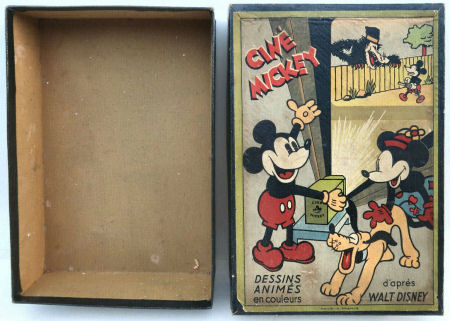 |
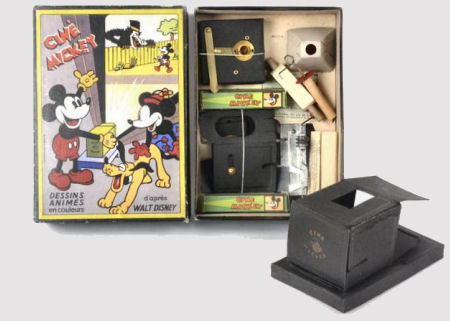 |
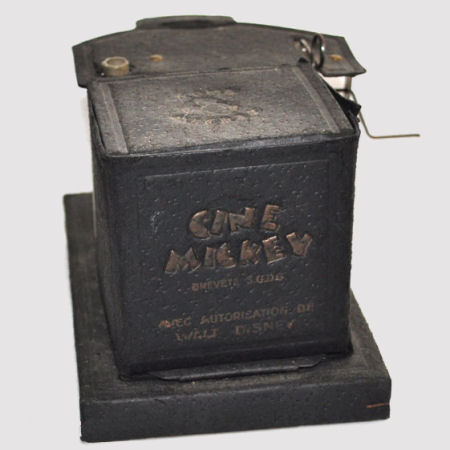 |
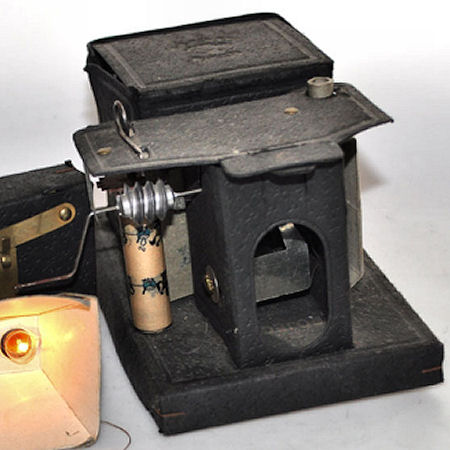 |
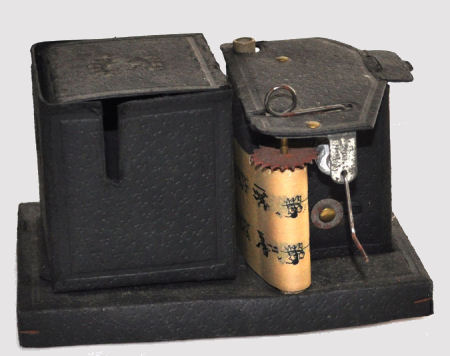 |
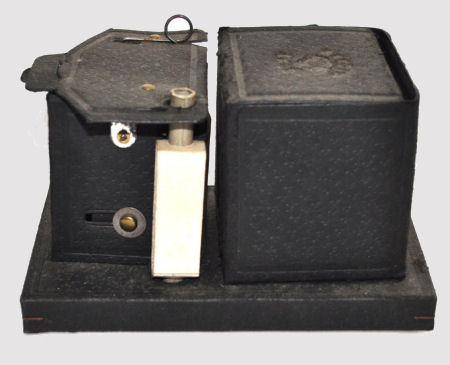 |
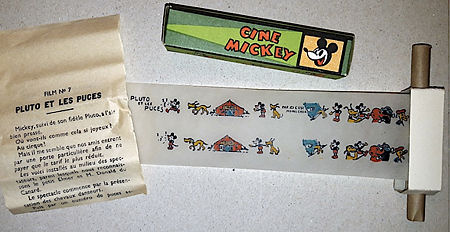 |
Some film titels: - PLUTO CHIEN DE COURSE - LE TRESOR DE PLUTO, - FIFI VEUT SORTIR SEUL - PLUTO ET LES PUCES - MICKEY SAUVEUR DES PETITS COCHONS |
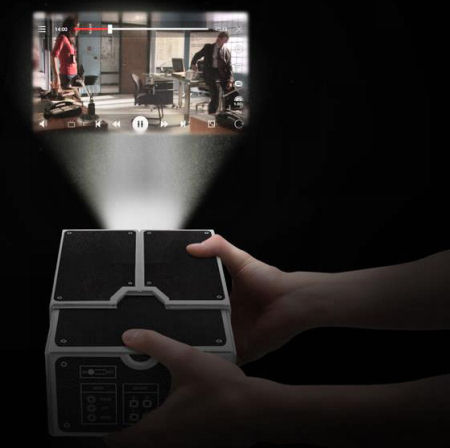 |
Luckies smartphone projector/beamer.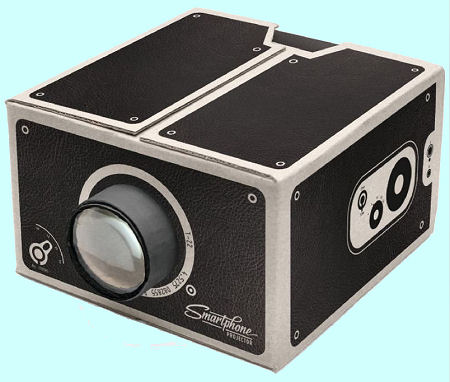 |
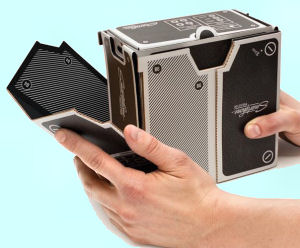 |
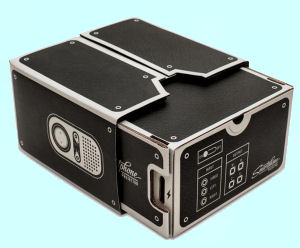 |
 |
| A very modern version of a magic lantern. Put a smartphone in this cardboard projector and the special lens enlarges the image 10x on the wall. The smartphone is placed in the fold-out compartment of the projector. The lens can be focused manually. The box is designed so that not only the image is enlarged, but the sound is also enhanced by the acoustics of the box. Dimensions: 10.5 x 16.5 x 17.5 cm; optimal distance between lens and projection screen (wall): 1 to 2 m. Do not expect HD quality. | ||
| More battery lanterns. | ||
| |
©1997-2025 'de Luikerwaal' All rights reserved. Last update: 21-03-2025. |
|
